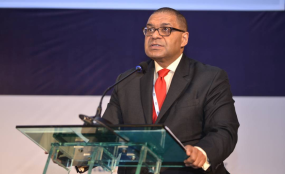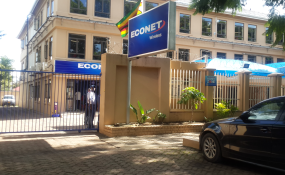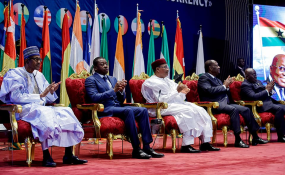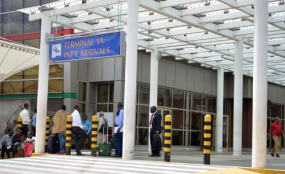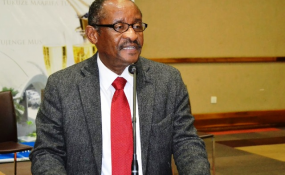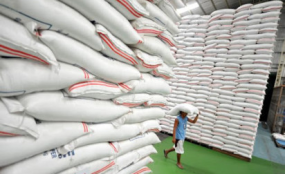INTERVIEW
The African Finance Corporation (AFC) which was established to help bridge Africa’s huge infrastructure gap, has made investments totaling more than $4.5 billion in a decade of operations. In an interview with AllAfrica’s Bunmi Oloruntoba and Reed Kramer during this month’s Annual Meetings of the IMF and World Bank, CEO Andrew Alli outlined that corporation’s strategy for scaling up to address Africa’s major infrastructure
Give us a quick overview.
The Africa Finance Corporation is an African multilateral organization that is tasked with financing infrastructure projects in five sectors. These are power, transportation, telecommunications, heavy industry and natural resources. In addition to financing projects, we also provide various types of advisory services. We aim to catalyze as many new projects as possible across the continent. We have a balance sheet of approximately $4 billion.
Where do you source the capital?
Initial equity capital came from a number of shareholders. Our biggest is the Nigerian Government through the Central Bank of Nigeria. They own about 42% of AFC’s equity. There various financial institutions which own the bulk of the rest, and we have a 10% shareholder which is an industrial company. That’s our equity base.
To address the shortage of ‘bankable’ projects, AFC is developing expertise.
We started off with a billion dollars of equity through retained earnings. That has grown to about 1.3 billion. We’re lucky enough to have an A3 credit rating, which is the second highest for a financial institution rating in Africa. This gives us a good access to the capital markets. We raise Eurobonds – we did one earlier this year. We raised a Sukuk (Islamic bond) earlier this year. We borrow in the commercial market, and we also borrow from other DFI’s particularly the international ones – DFI’s meaning Development Finance Institutions.
How difficult is it to raise the capital you need?
It’s always a problem to obtain capital. But we started off well capitalized, and we’ve been prudent in how we managed the business. Now we’ve got a very solid 10-year track record as well.
What role is AFC fulfilling that other multilateral finance institutions are not?
At the time we were founded, we were the only African institution with a focus solely on infrastructure financing, albeit with a rather broad definition of infrastructure. It’s important to have an organization that is devoted to infrastructure because it’s quite a difficult asset class.
For example, because we focus on infrastructure, we have developed expertise in project development. One of the reasons there aren’t that many infrastructure projects happening is a lack of skill and a lack of resources to do project development – taking a project from an idea through to where it can be financed. There are organizations helping with feasibility studies, but feasibility is, maybe, one-tenth of the process.
Once you know a project is feasible, you have to agree on the concession. You have to do the environmental studies and raise the financing, et cetera. There’s a lot of work that needs to be done, and we focused on this project development early.
We’ve also done a few pioneering things. We started off doing projects on our own, then we brought in other partners. We started financing third party developers. We closed a big project in Ghana called Cenpower which is a 350-megawatt power station where we were one of the lead developers. More recently we’ve been instrumentally in setting up the Africa Project Development Association – an association of power developers.
Also, unlike some other entities who are in the infrastructure space, we do equity as well. We take equity stakes in projects. We also do mezzanine financing, which you will find is less common.
How much investment is needed for infrastructure across Africa?
The estimates for the infrastructure financing gap range from $30 to $50 billion per annum. This includes projects that are ‘bankable’ as well as those that generally must be undertaken by governments, because they serve the public interest but don’t generate revenue. There are lot of infrastructure projects that have developmental impact, but have to have government funding because they aren’t commercial. Rural roads, for example, have to be done on the balance sheet of the government. They don’t produce a return for an investor.
We participate in projects that we expect to pay us back. In my view, it is better for governments to let the private sector do everything the private sector can. In our case, we bring in other investors and typically leverage three to five times what our own financing is. Roughly speaking, our four and a half billion translates into something between $15 billion and $20 billion worth of projects.
We continue to scale up, but we have constraints. One is the availability of well-structured, bankable projects. They’re not that many, unfortunately, which is why we got into project development in the first place. Secondly, obviously you need to be measured in how you scale up as a financial institution anyway. We started at a billion dollars, and we’re now at about $4 billion. We done that in 10 years and we expect to continue to grow.
What’s the governance structure of AFC?
The ultimate decision-making is the shareholders. Day-to-day, we have a board of directors – a number of them represent our larger shareholders, and we have one independent director. We’ll probably get another one soon. The board has three subcommittees: risk and investment, audit, and board nominations and governance. There’s a management team, which has an executive committee – a standard governance structure.
Does progress – or lack of progress – towards regional integration impact what you do?
Regional integration makes bigger markets, which makes for more healthy economies, more healthy companies. But it doesn’t always help with infrastructure projects. Power is one where you can get good economies of scale, and we’re seeing the development of regional power pools. But a lot of projects we are involved in don’t have a regional aspect – roads in-country, ports, et cetera. With regional projects, the complexity goes way up. You’ve got different political objectives, different regulations, different philosophies. Bringing that all together is difficult. If it really makes a lot of sense to do it, then of course, you should. But if you can do a project based on a single country then that’s where you should start.
How do you assess the Chinese role in infrastructure development?
A lot of it is orthogonal to what we do, because the Chinese have typically followed a model of government-to-government financing. They are helping governments finance the large chunk of projects that are not commercially bankable but are important. Now and again, they stray into the private sector, but largely that’s what they’ve done. It’s been roads, stadia, railway lines – things like that. We find them quite complementary. We have such a large need in Africa that I welcome funds from any source. As long as it’s well managed, Chinese funding is just as good as funding from anywhere else.
What are your biggest obstacles?
There is the gap between the obvious need for infrastructure investment in Africa and the lack of projects in which to invest. The bottleneck is not money; it’s actually lack of projects. There are a lot of people who would like to invest in infrastructure in Africa, but the projects are just not there. So we spend a lot of time and effort trying to help develop new projects.
We would like to see privatizing of government assets. Countries have done this to differing degrees and with differing levels of success, but there’s a lot more that can be done in that area – which ought to be done. A lot of countries haven’t privatized their ports – ports are imminently privatizable – or airports.
Africa needs ‘platform companies’ with large enough balance sheets to tackle big projects.
Power is also privatizable. But in many countries in Africa – again, not all – the power utility typically is government-owned. Typically, those are loss-making or not very profitable and therefore are not bankable. If I am financing a power station, I’m looking at credit worthiness to determine if I can finance a power station. If the utility buying the power is weak, it doesn’t make it impossible, but it makes it difficult. You have to spend a lot of cost and effort to credit enhance the state utility in order to finance that power station. Those are the some of the structural issues that I would mention.
Another issue [we face] is that the African private sector doesn’t have experience or, often, the financial resources to develop a large-scale project. We’ve been looking at how we can help to break the logjam in the power sector. If you look across Africa, there are very few large companies – companies with turnover of more than half a billion dollars. That’s a big problem because a lot of projects are done by large companies.
So we are creating a large power company by combining a number of power assets. Cabeolica in Cape Verde is the first commercial wind farm in Africa. We have Cenpower in Ghana. We’re merging those with the power assets of Harith, which is a South African fund manager. See: AFC and Harith Merge Assets To Bring Power To Africa.
The merger will provide reliable energy to over 30 million Africans in six countries with a capacity of some 1500 megawatts. We are close to making this happen, and we want to create more of these – what we are calling ‘platform companies’.

